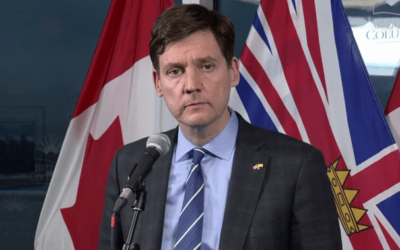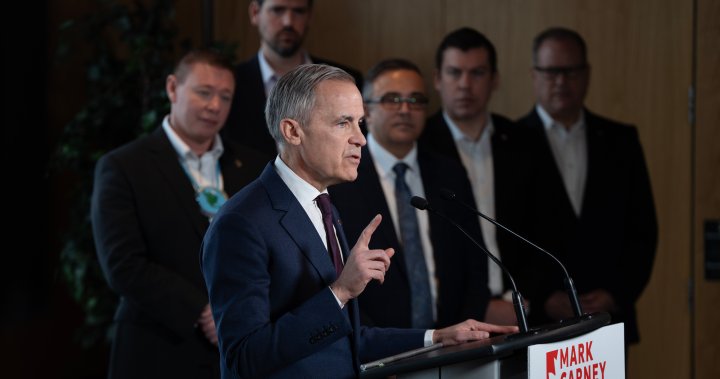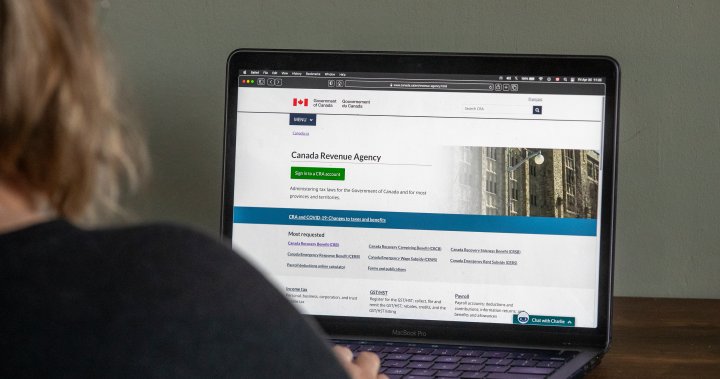Inflation is finally back at 2%. Is it the ‘light at the end of the tunnel’? – National

Annual inflation cooled sharply to two per cent in August, according to Statistics Canada, marking a major milestone in the Bank of Canada’s efforts to tame price pressures.
That’s half a percentage point lower than the 2.5 per cent annual rate recorded in July and continues a general cooling trend through 2024.
The last time inflation was at or below two per cent was in early 2021.
Statistics Canada pointed to cheaper prices on gasoline as driving down the headline inflation figure in August. Without the drop in gas prices, annual inflation would’ve been 2.2 per cent in August, StatCan said.

Grocery prices rose 2.4 per cent annually in August, up from 2.1 per cent in July, mostly because of comparisons to sizeable price movements the same time last year.
On a monthly basis, grocery prices were down 0.2 per cent from July to August, StatCan noted, thanks largely to seasonal drops in fresh vegetable costs.
Another part of the basket seeing monthly prices drops last month was clothing and footwear, down 0.6 per cent.
StatCan noted how rare this is — it’s the first time prices have fallen here in August since 1971 — given the month marks back-to-school shopping season. Retailers were cutting prices and using sales to lure in cash-strapped customers, the agency said; recent Ipsos polling for Global News shows parents are still feeling the pinch from years of high inflation despite recent cooling.
‘Light at the end of the tunnel’?
Benjamin Reitzes, BMO’s managing director of Canadian rates and macro strategist, tells Global News that the inflation report was good news for Canadians and for the Bank of Canada in particular.
He notes that price levels are still high and households shouldn’t expect widespread reversals anytime soon.

Get weekly money news
Get expert insights, Q&A on markets, housing, inflation, and personal finance information delivered to you every Saturday.
But monthly cost hikes should remain more “reasonable” going forward, he says, and the path for the Bank of Canada’s benchmark interest rate is clearly lower.
“Given the economic backdrop, I don’t see any reason for inflation fears to crop back up any time soon,” he says.
In the House of Commons on Tuesday, Finance Minister Chrystia Freeland hailed the August inflation report as “good news for Canadians” and the “light at the end of the tunnel” after years of surging prices and pandemic-related disruptions in the economy.
Conservative Party Leader Pierre Poilievre pushed back on Freeland’s positivity, noting that, after inflation peaked at 41-year highs in 2022, prices “continue to rise, just not as quickly.”
Poilievre pointed to the Liberals’ consumer carbon levy as the primary pain point; NDP Leader Jagmeet Singh meanwhile accused the government of allowing grocery executives to “rip off Canadians.”
Will the Bank of Canada pick up the pace?
The Bank of Canada’s sets its benchmark interest rate in an effort to achieve two per cent inflation, according to its mandate, with the view that a two per cent rate of annual price growth provides stability for households making decisions.
The central bank hiked its benchmark rate rapidly starting in March 2022 as inflation soared to 40-plus-year highs, but has since started to adjust rates lower with growing confidence that price pressures are back under control.
Focus among monetary policymakers in Canada has lately started to shift to fears that inflation will drop too far below two per cent amid signs of weakness in the labour market and wider economy.

“They want two per cent,” Reitzes says of the Bank of Canada’s inflation target. “Not too low, not too high. Just like Goldilocks.”
CIBC senior economist Andrew Grantham said in a note Tuesday morning that with gas prices continuing to fall thus far in September, inflation could well drop below two per cent this month.
He projects that a further 200 basis points of interest rate cuts are in store between now and the end of the year, bringing the policy rate to 2.25 per cent, in an effort to kickstart the economy.
“The bottom line then is that inflation remains unthreatening and the Bank of Canada should now focus on trying to stimulate the economy and halting the upward climb in the unemployment rate,” he wrote.
Canada’s jobless rate hit 6.6 per cent in August, a seven-year high outside the COVID-19 pandemic.
Reitzes says that signs of stability on the inflation front and fears of the economy deteriorating further mean that upcoming reports on Canada’s labour force and gross domestic product results will have more weight in the Bank of Canada’s rate decisions going forward.
Some economists reacting to the August inflation figures called for the Bank of Canada to cut by half a percentage point at its Oct. 23 rate decision.

“We expect central bankers to slash their policy rate by 50 basis points next month in an effort to expedite the return to a more neutral setting,” Royce Mendes, head of macro strategy at Desjardins Group, wrote in a report.
Money markets are fully pricing in 25-basis-point rate cuts at each of the last two monetary policy meetings of 2024, according to Reuters. Expectations of a 50-basis-point cut next month rose to 47.5 per cent from 46 per cent before the data on Tuesday were released.
BMO is currently expecting an interest rate cut of 25 basis points at the central bank’s next meeting, but Reitzes notes there’s a lot of data still to come before then.
If upcoming reports show more signs of weakness, Reitzes says the Bank of Canada may be forced to pick up the pace of rate cuts with steeper drops than the quarter-point moves that have marked the cycle thus far.
“We’re not there quite yet, but it’s not going to take a lot to get there,” he says.
— with files from Reuters
© 2024 Global News, a division of Corus Entertainment Inc.








